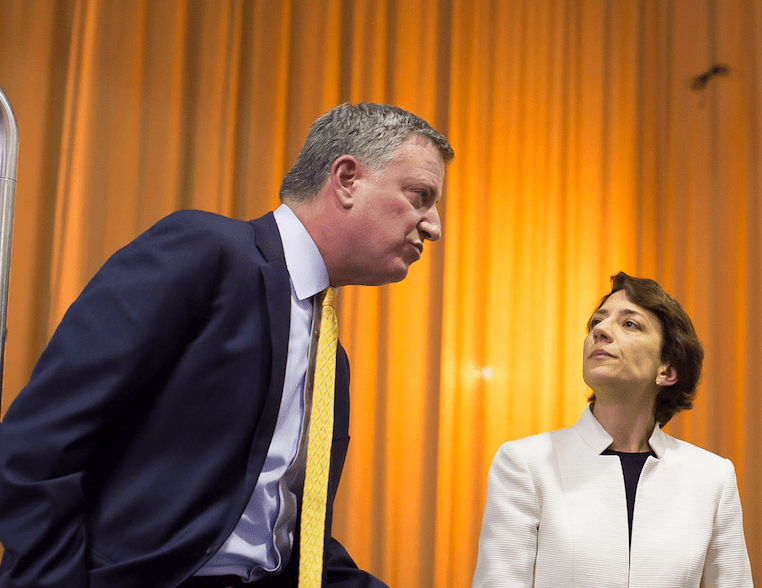Four Days Later, DOT Still Has No Plan to Handle Coronacrisis Cycling Surge

The Department of Transportation is still “reviewing” ways to improve conditions for the surging numbers of cyclists — four days after agency head Polly Trottenberg told the New York Times the very same thing.
The saga dates back to last week, when Mayor de Blasio urged commuters to use bikes if they could. Transportation Alternatives followed by demanding that the city better accommodate those commuters, who were indeed choosing cycling over public transit during the coronavirus crisis. Streetsblog pressed the issue repeatedly, but got nothing definitive.
Finally, the Times spoke to Trottenberg on Friday and reported this:
Polly Trottenberg, the city transportation commissioner, said her agency was reviewing additional measures to accommodate the increased number of cyclists taking to the streets to avoid the subways and buses as a result of the coronavirus.
“We’re looking at everything we can do quickly to make cycling even safer, and easier, and more accessible.” Ms. Trottenberg said.
The transportation agency is considering carving out temporary bike lanes and taking away traffic lanes from cars by using orange cones or movable barriers. More parking areas for bikes may be designated on sidewalks and in pedestrian plazas.
City officials are already expanding Citi Bike in northern Manhattan and the South Bronx, and now they are also looking to accelerate plans to add more docking stations in Manhattan’s busiest areas.
Here is the statement that DOT just sent over to Streetsblog:
With the increase in ridership, we are reviewing potential measures we can take to make cycling even safer, easier and more accessible.
We are looking at the feasibility of carving out temporary bike lanes by using cones or movable barriers. We are also evaluating the possibility of designating more parking areas for bikes on sidewalks and in pedestrian plazas.
Additionally, as we work with Lyft to expand Citi Bike in northern Manhattan and the South Bronx, we are also looking at accelerating plans to add more docks and stations in Manhattan’s busiest areas.
The lack of a specific location for enhanced cycling infrastructure is odd, given that DOT is scheduled to complete the Sixth Avenue protected bike lane in Manhattan. The agency was supposed to present its final plan to a Midtown community board later this month, but that presentation has been canceled.
Plan to have some extra travel time in your commute. If the train that pulls up is too packed, move to a different car or wait to take the next one.
Bike or walk to work if you can.
— Mayor Bill de Blasio (@NYCMayor) March 8, 2020
Agency officials did not respond to Streetsblog’s request for whether the DOT would simply put down cones on Sixth Avenue now. The agency has also not responded to an earlier request for improvements on the crowded Queensboro Bridge, which is also experiencing an increase in cycling, even though bikers and pedestrians share one narrow lane on the north side of the bridge. Advocates have long called for removing cars from the south outer roadway so that pedestrians and cyclists would have their own space.
Transportation Alternatives’ Executive Director Danny Harris couldn’t believe the delays.
“Nine days [after de Blasio urged people to bike to work] … the city has not taken action to create dedicated bike corridors, which are critical to keeping people moving while promoting social distancing,” Harris said. “We must act quickly to dedicate safe space to cyclists, even putting cones on the street as cities like Bogota did days ago.”
Harris was referring to the Colombian capital, which this week created 72 miles of new bike routes to help people get around while also maintaining social distancing.
The de Blasio administration’s delay in implementing road safety improvements during the fast-moving coronavirus crisis is understandable, but also needs context. According to media accounts, top de Blasio officials have had to pressure the mayor — including threatening to resign — before he gradually agreed to make substantial changes such as closing the public schools and shutting down bars and restaurants.
The mayor has denied that any top official threatened to resign, but it is clear that some agencies are being prioritized during the crisis.
This is a breaking story. We are pressing for more (a lot more) details and will update you when we hear more.





